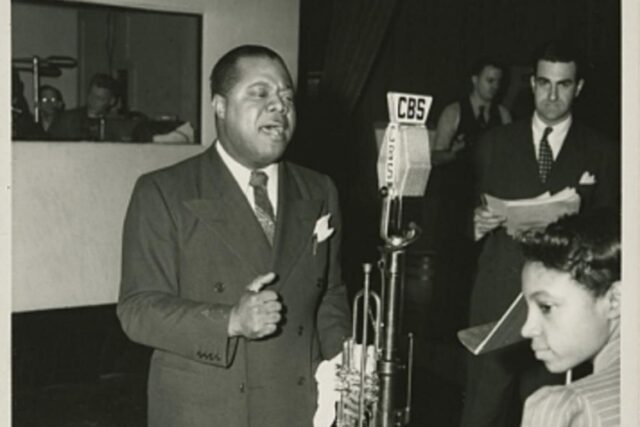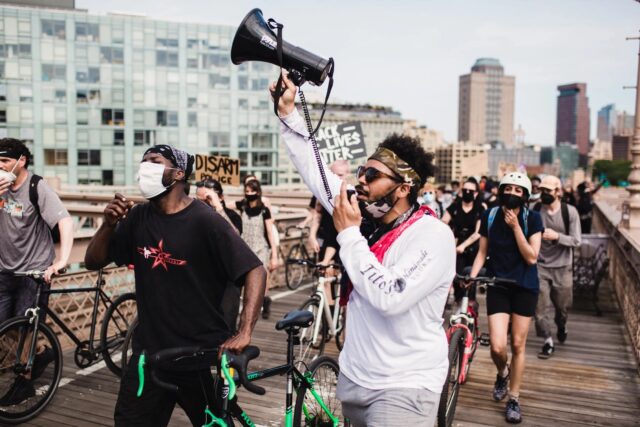February 8, 2023
Black History Month: Celebrating the Rich Legacy of Cycling in New York City’s Black Communities

To kick off Black History Month, we want to highlight the rich legacy of Black cycling in New York City and remind you that we’re riding through time and honoring Black biking history with our Black History Month Bike Ride on Saturday, February 25.
As we commemorate Black History Month, let us acknowledge and appreciate the tremendous impact the Black community has had on cycling. Despite facing discrimination and mistreatment, African Americans have been integral members of the city’s cycling community since its inception and continue to play a vital role today.
The First Bike Boom
In the late 19th century, the U.S. was having its first bike boom. As biking became more accessible and embraced by Americans, the bicycle became a symbol of freedom for Black Americans, especially in the South, as it provided a way around the increasingly segregated public transit systems.
New York City was also emerging as a hub for newly freed Black people and Caribbean immigrants. By the 20th century, the “Harlem Renaissance” created a space for Black cultural, political, and intellectual expression, with Harlem becoming synonymous with Black pride and community. As cycling grew in popularity across the United States, many Black Americans, including cultural leaders such as Zora Neale Hurston, Langston Hughes, and Duke Ellington, took up cycling for both transportation and recreation.

Collection of the Smithsonian National Museum of African American History and Culture
Black communities in New York City drove the rise of cycling culture in the 1900s. By mid-century, cycling had become mainstream, thanks in part to Black-led cycling organizations that promoted fitness and socializing, as well as Black-owned bike shops that served local cycling needs.
NYC Cycling and the 20th Century
Despite ongoing discrimination and segregation in housing and employment, the Civil Rights Movement and activism from leaders like Malcolm X and James Meredith brought attention to the inequalities and injustices faced by Black Americans, including in cycling. Many Black cycling organizations also advocated for civil rights and used biking to challenge racial segregation in public spaces. Black New Yorkers also played a significant role in the city’s bike messenger scene, providing an important source of livelihood for their families.
In the 1960s, 70s, and 80s, Black New Yorkers faced transportation and mobility challenges, and many turned to biking. Despite facing discrimination and harassment on the roads, especially from law enforcement, cycling remained a crucial part of the Black experience in New York City. African American cyclists formed clubs, organized rides and events, and fought for their rights on the road, fostering a sense of togetherness and promoting health and well-being.
Cycling in NYC Today
New York City remains one of the most diverse cities in the world, and the Black communities in the city continue to shape its culture, economy, and politics. Black cycling remains strong, with African Americans making up 16.4% of all cyclists in the city and being twice as likely to bike as their white counterparts.
While progress has been made toward equality and opportunity, systemic racism remains an issue. The Black Lives Matter movement has brought attention to the discrimination Black Americans face, including disparities in transportation and mobility. There are calls for increased investment in bike infrastructure and programs in Black communities to promote equity and access to cycling.

Life Matters via Pexel
In recent years, New York City has seen a rise in Black-led cycling initiatives, from the Good Company Bike Club, reimagining what liberation looks like for Black and brown New Yorkers through cycling, to Black Girls Do Bike NYC, a supportive community for Black women cyclists. The NYC Department of Transportation has also implemented various safety measures, such as bike-specific traffic signals, protected bike lanes, and bike-share programs, to make cycling safer and more accessible for people of color.
Bike New York has also done its part to make cycling safer, more accessible and fun for the biking community–including Black cyclists. Our commitment to equitable access to cycling includes initiatives like our free bike education program, our participation in the Summer Open Streets program, and our bike events.

Riders at the TD Five Boro Bike Tour
CELEBRATING BLACK HISTORY MONTH
Black History Month is a time to recognize and uplift the rich history, resilience, and ongoing struggles of Black residents in New York City. The journey of Black people in New York is a testament to their unwavering strength, contributions, and pursuit of equality. So this month, let’s reflect on their impact and work towards creating a more equitable society.
And what better way to do that than by shining a light on the inspiring Black cyclists in our community? Our Bike New York ambassadors, the “Roadies,” are breaking down barriers and promoting physical wellness, building community, transforming their neighborhoods, and reclaiming joy through their love of cycling. So join us in this ride, and get inspired to spread the joy of cycling through our Black History Month blog series, with new articles coming out every Wednesday in February.

